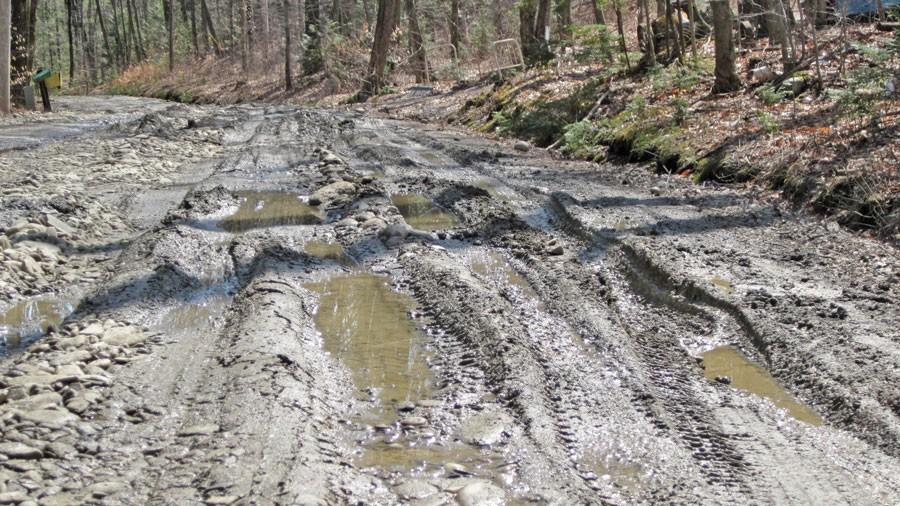Mud season madness
Many northern New Englanders refer to it as the fifth season. No, it’s not embedded somewhere in the bipolar winter that we have had, but it does follow in Old Man Winter’s footsteps, waiting patiently for its time to shine.
Mud season is upon us in Vermont. Many 4×4 enthusiasts might look forward to this approximately month-long season of its own, but across Vermont it is one of the few times you will hear those individuals who enjoy their backroads lifestyle complaining about where they live.
Depending on the severity of the winter, mud season tends to occur anywhere between mid-March and early May.
Two-thirds of Vermont’s 12,812 miles of maintained roads are dirt, and, come mud season, a good portion of these roadways are at risk of turning into quagmires.
Depending on the severity of road conditions during this month-long endeavor, many back roads will be posted with weight limits, usually restricted to under six tons. This often causes problems for certain occupations, such as the logging businesses, because they have to delay work.
Delivery drivers for companies like FedEx and UPS face similar issues. Packages might end up being delayed several days if certain roadways are closed for extended amounts of time. To go along with this, trying to get their trucks through some nasty sections of muddy roadways can present additional challenges.
The degree to which roads turn to mud depends on a number of variables, and soil composition is among the most important. For muddy roads to form with ease during thawing periods, the dirt must contain a 12 percent fine-soil content. This kind of soil is where you will find the majority of muddy roads during mud season. Dirt with a fine-soil content of less than 5 percent makes for the best overall roads.
When it comes to seasonal driving, many out-of-state visitors might describe some of the typical Vermonter driving habits to be similar to the fearlessness of their neighbors just north of the border in Canada. Generally and typically pushing speed limits on back roads in their Subarus and pickup trucks, it might seem as if Vermonters have some special ability to maintain control.
However, whenever mud season comes around, the wise Vermonter will bow to Mother Nature and look for alternative routes. Soupy roads, deep ruts, and bumps are all waiting to potentially mess up your automobile’s steering alignment, suspension, and exhaust systems.
Getting stuck on one of these mud season back road adventures is another issue of its own. It will generally start with hearing scrapes from your car’s bumpers and rocker panels bottoming out in the mud. This will be followed by your car’s speedometer slowly creeping closer to zero. Lastly, if you turn down your stereo, you will hear your wheels spinning in the mud until you stop making forward progress in your driving.
The U.S. Army’s Cold Regions Research and Engineering Lab conducted a study of muddy Vermont roads. Their report, “Improved Performance of Unpaved Roads During Spring Thaw,” ended up concluding that the cost of improving mud season road conditions can be estimated at $140,000 per mile. With those costs involved, many cash-strapped towns will choose instead to use more basic methods.
For example, the majority of town garages throughout the state of Vermont will have access to a road grader. These machines are crucial to the reconstruction of dirt roads during and following mud season. Once the roadways have solidified, the grader operators will crown the dirt roadways to help with water runoff — presumably at a much lower cost than a full reconstruction.
All in all, even though we have to deal with and sometimes plan our lives around mud season, for some it means that sugaring season is well underway, and for others it means that another ski season is sadly coming to an end.
If your car remains intact, congratulations: you have successfully made it through another New England mud season. Now you can look forward to the lovely summer months that will begin within a few calendar page flips.










